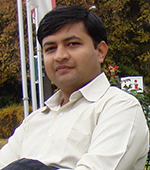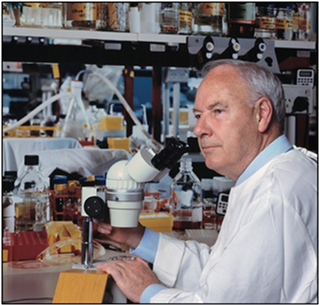 By Piyushkumar Kapopara, Postdoc in Conway Lab
By Piyushkumar Kapopara, Postdoc in Conway Lab
Last week, as I was looking for motivation to perform my blood clot analyses and mindlessly flipping through a forgotten issue of The Scientist on my desk, I stumbled across an article entitled, “The Father of Modern Hematology Dies”. What shocked me was, sadly, not the fact of his death, but rather that I didn’t know who he was, particularly as I am now a postdoctoral fellow in hematology. This lapse had to be corrected! And here I would like to share with you my discovery of this inspirational scientist and leader, and try to answer a question that is on everyone’s mind: How does one become a father/mother of an entire field of knowledge?

Image Source: Cell 2015 160, 361-362
Professor Donald Metcalf was a titan of his field, studying, among other things, the production of blood cells, cell survival, suppressors of cell signalling, and stem cells.
Donald Metcalf was born on February 26, 1929 and studied Medicine at the University of Sydney. Before embarking on his research on leukemia, he studied vaccinia virus in the laboratory of Nobel Laureate Sir Frank Macfarlane Burnet at the Walter and Eliza Hall Institute, Australia. It was only later that he transitioned to study hematology. He undertook postdoctoral work at Harvard Medical School for two years, subsequently returning to the Walter and Eliza Hall Institute as Head of the Cancer Research laboratory. In 1966, Prof. Metcalf assumed the position of Deputy Director of the same institute.
Over a period of fifteen years, Prof. Metcalf and his colleagues identified and purified four hormones leading to the discovery of so-called ‘colony stimulating factors (CSFs)’, referred in that way, because they stimulated the production of white blood cells. His discovery of CSFs revolutionized the way cancer is treated, benefitting an estimated 20 million patients worldwide.
Cancer patients undergoing chemotherapy often suffer from a depletion in their blood cells, leaving them vulnerable to infection. Prof. Metcalf speculated that there must be something that regulates white blood cell turnover, which could pave the way to tackle this side effect of chemotherapy. Treatment with CSFs is now standard practice and every year the number of people who survive because of his work grows. His discovery also revolutionized transplant medicine by providing new techniques for bone marrow transplantation for blood diseases. There can be no greater legacy for a medical researcher.
Practical, loyal, and hardworking were the qualities that he possessed, as described by Prof. Hilton, director of Walter and Eliza Hall Institute of Medical Research and division head for Molecular Medicine. One excerpt from his tribute to Prof. Metcalf also provides a clue into the inner life of his laboratory:
“Upon a new recruit starting in his unit, it was mandatory for them to meet with Don, who, at least until the mid-1990s, would be smoking a cigar, and would lull you with a question like “have you had a good holiday” – inviting a response like, “yes, thank you Professor Metcalf, I have had a lovely two weeks camping at Wilson’s Promontory” – which was then followed by “excellent, that’s the last holiday you will have for three years, get to work”. And it was the last holiday you took, not because Don would stop you taking leave, but because his hard work was infectious and the lab would become your world”.
Although he officially retired in 1996, Prof. Metcalf, continued his research, studying the regulation of normal and leukemic blood cells. And even after being diagnosed with metastatic pancreatic cancer in August 2014, for which he himself underwent chemotherapy, he continued to work. He performed his last experiment in October and passed away surrounded by his family on 15 December 2014 at the age of 85.
Prof. Metcalf’s autobiography entitled “Summon up the Blood: In dogged pursuit of the blood cell regulators” was published in 2000.


